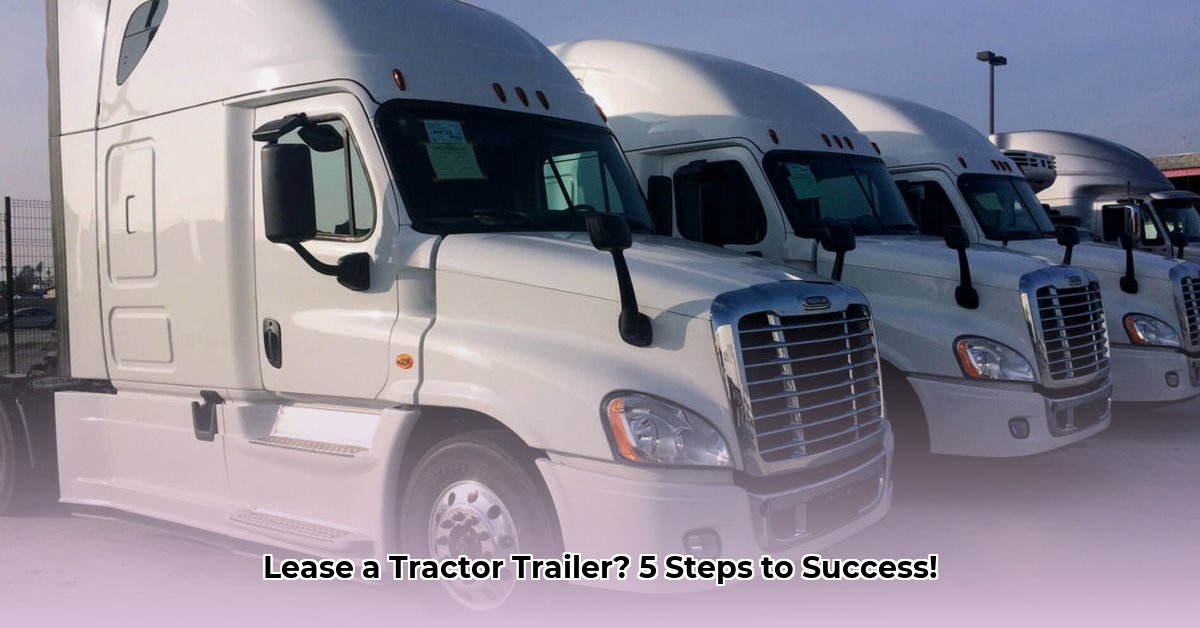
Finding the right tractor-trailer lease can significantly impact your trucking business's success. This guide simplifies the process, providing actionable steps to help you navigate the complexities of leasing and make informed decisions. For more resources on leasing, check out this helpful guide.
1. Defining Your Operational Needs: The Right Truck for the Job
Before exploring lease options, analyze your business requirements. What type of freight will you haul? (e.g., refrigerated goods, dry van cargo). What's your delivery radius? (local, regional, long-haul). How much cargo volume do you anticipate transporting? These factors determine the ideal tractor-trailer size and type. A smaller, fuel-efficient truck suits local deliveries, while a larger rig is better for long distances and heavier loads. Don't underestimate the impact of fuel economy and potential maintenance on your profitability. Careful planning here significantly reduces future challenges.
2. Selecting the Ideal Leasing Partner: Research is Paramount
Choosing a leasing company requires thorough research. Compare different companies (like XTRA Lease and Apple Truck and Trailer1), assessing their reputation, customer service, and lease terms. Examine maintenance packages – are repairs included? Transparency is key; a reliable company openly communicates all aspects of the lease agreement. Thorough research helps avoid future issues and ensures a smooth partnership. Think of this as selecting a business partner; you need someone reliable and trustworthy. A quick online search reveals numerous reviews and testimonials that can guide your decision.
3. Navigating the Application Process: Documentation Essentials
The application process involves gathering necessary documentation and undergoing credit and driving history checks. A strong credit score and clean driving record significantly improve your chances of approval and securing favorable lease terms; it also improves your negotiating position later on. Prepare documents such as proof of insurance, driver's license, and any other materials the leasing company requests. The more prepared you are, the smoother the approval process. Avoid rushing this crucial step.
4. Negotiating Lease Terms: Securing Favorable Conditions
Review the lease agreement meticulously before signing. Understand the payment schedule, maintenance responsibilities (if any), and insurance requirements. Don't hesitate to clarify any ambiguities. Negotiating favorable terms is possible, especially with a strong credit history and viable business plan. Remember, this is a significant financial commitment; ensure complete understanding and comfort with all terms. A well-negotiated lease protects your financial interests and ensures a mutually beneficial partnership.
5. Ongoing Maintenance and Cost Management: Strategies for Success
Regular maintenance is vital for preserving your investment and minimizing downtime. Budget for routine checkups, repairs, and insurance premiums. Preventative maintenance significantly reduces the risk of expensive repairs and unexpected expenses. This includes compliance with safety inspections and adhering to all necessary regulations. Proactive maintenance is an investment that safeguards your equipment and profitability. Tracking mileage and meticulously maintaining records supports cost management and strengthens your position during future lease negotiations.
Key Takeaways:
- Lower Upfront Costs: Leasing offers significantly lower upfront costs compared to purchasing a tractor-trailer outright.
- Lease Term Impact: Lease terms directly impact overall expenses. Carefully review mileage limits, maintenance responsibilities, and early termination fees.
- Insurance is Key: Insurance represents a substantial cost; obtain quotes from multiple providers to ensure you're securing the best rates and coverage for your needs.